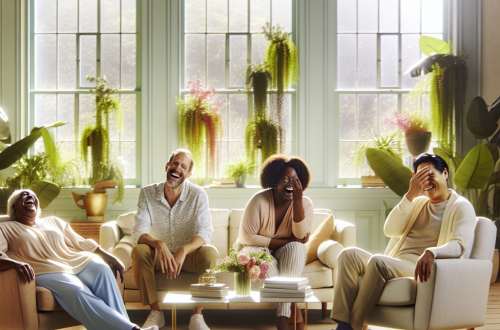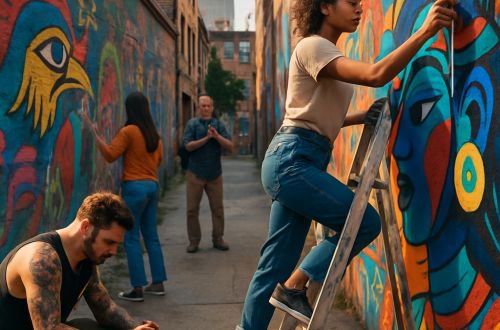The Influence of Street Art on Modern Urban Culture

Street art, once considered a fringe activity by the mainstream art community, has elbowed its way into urban culture, painting the town red and blue, and green, and just about every color on the palette. You know, it’s funny how what was once seen as a rebellious act of vandalism has now become an integral part of city life. From the colorful murals of Buenos Aires to the politically charged pieces in Berlin, street art has a lot to say and people are listening.
The Evolution of Street Art
Street art has been around for decades, perhaps even centuries if you trace its origins to ancient cave paintings. But let’s not get carried away back to the Stone Age. In its modern form, street art emerged as a defining feature of the 20th century, particularly in the graffiti-laden subways of New York City during the 1970s. Artists like Keith Haring and Jean-Michel Basquiat began their careers on the streets, leaving marks that were both literal and metaphorical.
What’s fascinating is how street art has evolved from simple tags on a subway car to complex, thought-provoking murals that cover entire building facades. It’s become a legitimate form of artistic expression, capable of tackling social issues, politics, and personal identity. Banksy, whose work has sparked as much debate as admiration, is perhaps the most famous modern street artist. His stencils often critique consumerism, war, and the establishment, and they’ve been sold for millions at auction an ironic twist, considering his anti-commercial stance.
The Role of Street Art in Urban Revitalization
Here’s where things get interesting. Street art has played a pivotal role in urban revitalization efforts worldwide. Neighborhoods once deemed undesirable have been transformed into vibrant cultural hubs, thanks to the power of a little spray paint. A case in point is the Wynwood Walls in Miami. What started as a collection of warehouses in a forgotten part of town has become a mecca for street artists and art lovers alike. Wynwood is now one of Miami’s trendiest districts, drawing tourists, artists, and locals with its colorful murals and hipster cafes.
It’s not just Wynwood. Cities like Lisbon, Melbourne, and Bogota have embraced street art as a tool for cultural and economic renewal. The murals provide not just visual appeal but also foster a sense of community pride. In many cases, local governments have commissioned artists to create works that reflect the history and identity of the neighborhood. Who knew that a splash of paint could have such an impact?
Now, I’m not saying that street art is a silver bullet for urban decay. There are complexities and challenges involved, like gentrification and the potential commercialization of once-authentic spaces. But it’s hard to deny the positive vibe and energy that street art brings to a community.
The Dialogue Between Art and Audience
One of the most compelling aspects of street art is its ability to engage directly with the public. Unlike galleries and museums, street art is accessible to everyone. You don’t need a ticket or an art degree to appreciate a mural on the side of a building. It’s art for the people, by the people.
Take the example of the Berlin Wall. After its fall, artists from around the world flocked to transform the barren concrete into a canvas for expression. Today, it stands as the East Side Gallery, a poignant reminder of the past and a celebration of freedom. Each piece invites viewers to contemplate, react, and maybe even feel a little inspired or angry, or amused, depending on the message.
This interaction isn’t one-way. The audience is as much a part of the artwork as the paint itself. People take selfies, share their experiences on social media, and sometimes, react with their own artistic contributions. It’s a conversation a messy, unpredictable, and often beautiful dialogue between artist and audience.
I remember walking through the streets of Reykjavik in Iceland. It was a crisp autumn day, and the artwork seemed to pop against the grey skies. One mural, in particular, caught my eye: it depicted a giant cat lazily lounging across an entire building. A local walked by and casually mentioned that it was a tribute to the neighborhood’s beloved stray cat that had passed away. I couldn’t help but smile at the idea that a community would honor a stray cat with such a grand gesture. It was a reminder that street art doesn’t always have to be serious it can be whimsical and light-hearted, too.
Challenges and Controversies
Street art isn’t without its critics and controversies. For some, the line between art and vandalism is still a bit blurry. Cities have laws against unauthorized art, and artists often risk fines or jail time for their work. It’s a bit of a paradox, isn’t it? The very thing that makes street art raw and exciting its rebellious nature is also what makes it illegal in many places.
Then there’s the issue of commercialization. As street art gains popularity, it risks losing its edge. Brands have started to co-opt the aesthetic for advertising, which can dilute the message and authenticity. Some purists argue that real street art shouldn’t be for sale, though others see no harm in artists making a living from their talent. I mean, who doesn’t want to get paid for what they love?
Despite these challenges, street art continues to thrive. Artists are finding new ways to push boundaries, whether through digital mediums or interactive installations. The medium is ever-changing, adapting to the times while staying true to its roots.
Street art, in all its chaotic glory, has a unique way of influencing modern urban culture. It beautifies, provokes, and inspires, serving as both a mirror and a megaphone for society. It’s a testament to the power of creativity and the human spirit and maybe a reminder not to take life too seriously. After all, sometimes the most profound messages are found not in the polished galleries but on the streets, where the world is invited to join the conversation.


